Six presidents have visited Quincy while in office; seven others came here before they were president
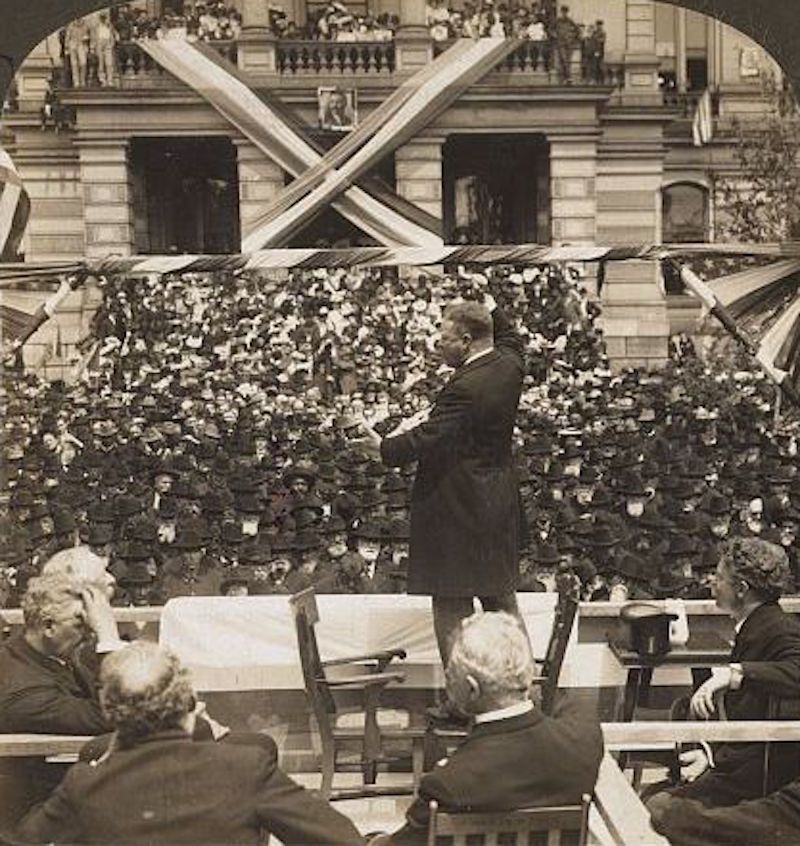
QUINCY — Six presidents have visited Quincy while they were in office, and seven others visited the city before they became president. Former President Donald Trump will be the first to visit the city after his term as president was over when he arrives at Quincy Regional Airport on Saturday afternoon.
Rutherford B. Hayes
RUTHERFORD B. HAYES, the 19th president of the United States, visited Quincy on Sept. 23, 1879, during his lone four-year term in office.
Hayes’ party left Chicago on the Chicago, Burlington and Quincy Railroad and arrived in Quincy for a few hours visit before leaving for Hannibal and eventually continuing to Kansas. William Tecumseh Sherman, a Civil War general who famously ordered that all government and military buildings in Atlanta be burned to the ground in 1864, and Lt. Gen. Phil Sheridan were members of Hayes’ party.
A local committee that included Mayor W.T. Rogers and Gov. John Wood drove to Camp Point to meet the president’s train, which arrived two hours late. The committee later escorted the presidential party to the Tremont Hotel, where Hayes spoke from the balcony and a dinner was held in his honor. Hayes later made speeches in Washington Park.
The entire visit of the presidential group lasted a little more than two hours before they departed for Hannibal.
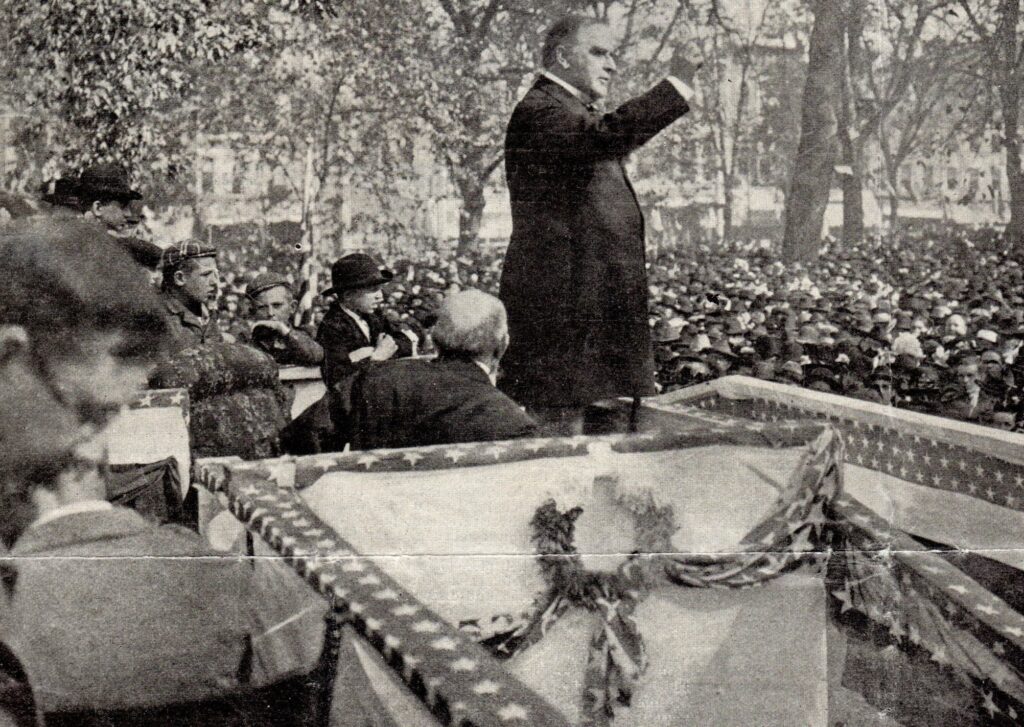
William McKinley
WILLIAM McKINLEY, the 25th president of the United States, visited Quincy on Oct. 6, 1899, during his first term in office. He led the nation to victory in the Spanish-American War and raised protective tariffs to promote American industry. He had just started his second term in office when he died from an assassin’s bullet on Sept. 14, 1901.
McKinley’s traveling party included his wife, Secretary of State John Hay and Secretary of War Elihu Root. The party left Washington, D.C., on Oct. 4 by train and arrived at the Illinois Soldiers’ and Sailors’ home shortly at 7:55 a.m. Oct. 6. McKinley passed through lines of veterans at the home before going to a reviewing stand in front of the headquarters building. He later visited the hospital at the home.
McKinley’s party then was escorted in a horse-drawn carriage along Sixth Avenue to Washington Park, where he spoke for five minutes.
“From the revolution up to the present day, the American people have been ever ready to defend the honor of the flag and take up arms in a righteous war,” McKinley said. “Righteous wars bring responsibilities which can not be repudiated, bring duties which must be performed.”
He also made an appearance at the Newcomb Hotel. McKinley was in Quincy for about three hours before leaving to make stops in Canton, Ill., Peoria and Galesburg.
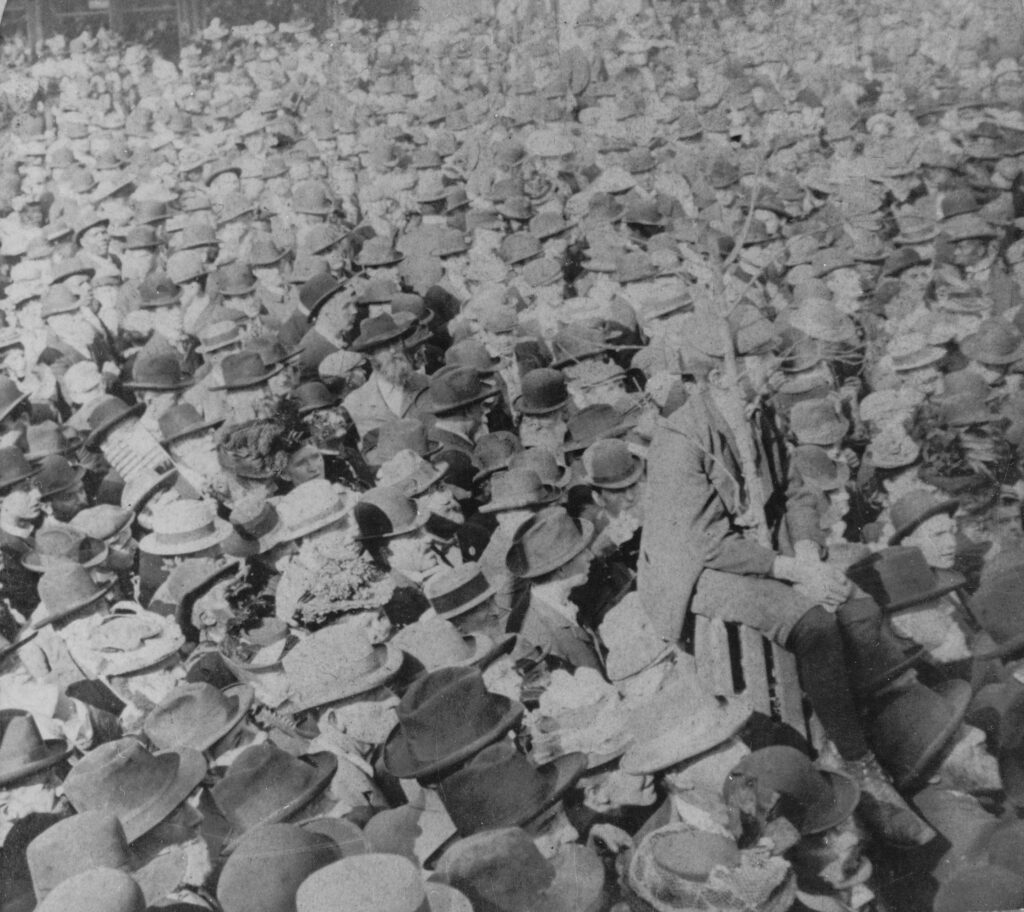
Theodore Roosevelt
THEODORE ROOSEVELT, the 26th president of the United States, visited Quincy on April 29, 1903. With the assassination of McKinley, Roosevelt, not quite 43, became the youngest president in the nation’s history.
Roosevelt took his grand tour of the western United States between April and June of 1903. He laid the cornerstone of the University of Chicago Law School, made a legendary visit to the Yosemite Valley and gave whistle-stop speeches in small towns and big towns alike. He reminded Americans of their common values and appreciated their hard work. At nearly every stop, he recognized veterans and children for their contributions to society.
Roosevelt was in Quincy for less than an hour, arriving at 11:15 a.m. He arrived by train from Keokuk, Iowa, and was greeted by Quincy Mayor John A. Steinbach. He was transported by a carriage downtown, and was greeted by 8,000 children outside Jefferson School.
Roosevelt eventually addressed the crowd from a speaker’s stand at Sixth and Vermont. He began his fiery speech standing at the rail at the north end of the stand, but some of the people could not see him. He then stood on a chair as he completed his speech.
“No law that the wisest hand ever can devise or ever will devise can make a coward brave, a fool wise or a weak place strong,” Roosevelt said. “Just exactly as in the Army, you need good weapons. But take the best weapon and put it in the hand of a poor man, and he will be beaten by a good man with a club. We need good laws, a good scheme of government, but it won’t work if we have not got the right type of citizenship in the community.”
Roosevelt then crossed the river into Missouri and visited Hannibal, Clarksville and Louisiana before heading to St. Louis for the Louisiana Purchase Exposition.
Jimmy Carter
JIMMY CARTER, the 39th president of the United States, visited Quincy on Aug. 23, 1979, as part of a week-long tour of the Mississippi River on the Delta Queen stern-wheeler that started in St. Paul, Minn., and ended in St. Louis.
More than 1,000 spectators were at Lock and Dam 21 when the Delta Queen docked at 3:20 a.m. Carter was on a “working vacation” with his wife, Rosalynn, and their daughter, Amy. He stepped off the boat at 4:50 a.m.
“You folks get up early here,’ Carter said.
Surrounded by Secret Service agents, Carter moved along the chain link fence lining the lock for about 30 minutes, shaking hands and stopping occasionally to listen to a constituent.
Carter was greeted by Miss Quincy, Anita Hawkins, and several Democratic aldermen. Ambassadors from the Quincy Chamber of Commerce presented Carter with T-shirts that read, “Where In The Heck is Quincy?”
The Delta Queen left Lock and Dam 21 at 6:30 a.m. and headed for Hannibal, Mo.. where they toured the Mark Twain Boyhood Home and Museum, the Mark Twain Caves and several other tourist locations.
Bill Clinton
BILL CLINTON, the 42nd president of the United States, visited Quincy on Jan. 28, 2000, the day after he made his final State of the Union speech. Clinton replayed the themes of his State of the Union message. Quincy was seen as a small city that had mirrored the nation’s economy, from recession and factory closings in 1992 and flooding of the Mississippi River in 1993 to renewed growth in 2000.
Crowds waited for hours in 25-degree temperatures to hear him. Schools shut down in Quincy for the day. Local television stations provided continuous live coverage, following Clinton’s motorcade along rural highways lined with people waving.
When Clinton arrived in Quincy’s Washington Park, he said, “As I look out here on all of you, I see fresh evidence of what I said last night: Folks, the state of our union is the strongest it has ever been, thanks to you.”
He breezed through economic statistics he cited in his speech before Congress, then called for more federal support for farmers. Then he said, “If you don’t remember anything else I said today, you remember how you were in the flood. And remember that when you have the chance of a lifetime to help somebody, you cannot be lulled into complacency.”
When Clinton finished, he went out to the barrier that held the crowd back and worked the length of it, shaking hands, posing for pictures and accepting a Quincy University baseball cap. He later shook hands with well-wishers at Madison Park.
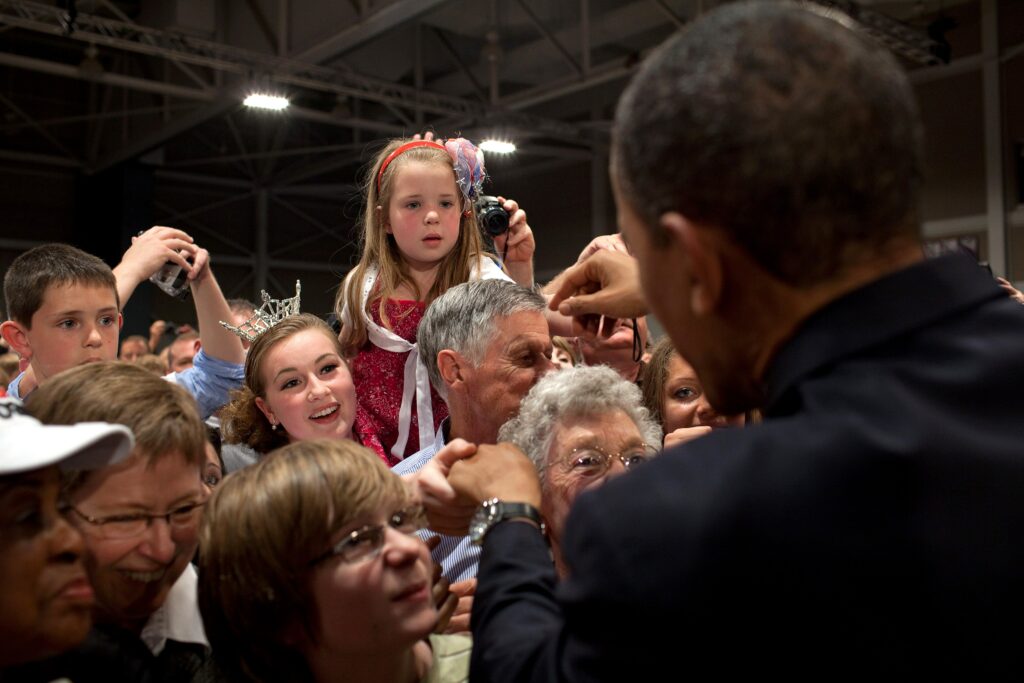
Barack Obama
BARACK OBAMA, the 44th president of the United States, visited Quincy on April 28, 2010, speaking to an estimated crowd of 2,300 people inside the Oakley-Lindsay Center.
His visit to Quincy was during the second day of a two-day tour. He was in Quincy for minutes on April 27 before traveling by helicopter to the Siemens plant south of Fort Madison, Iowa. He also made stops during his visit to Iowa in Mount Pleasant, Ottumwa and Des Moines.
Before speaking in Quincy, Obama toured the POET Biorefining plant in Macon, Mo., and a family farm in Palmyra, Mo. He also picked up a cheeseburger and French fries during a camera-friendly stop at Peggy Sue’s Cafe on Main Street in Monroe City, Mo. He also greeted a small group of employees at a local insurance agency across the street from the cafe.
Obama talked for about a half-hour at the OLC. He used the first half of his speech to talk about when he was an Illinois senator and came to Quincy to fill sandbags as a presidential candidate on June 14, 2008. He talked about how his administration was working to bring the country back from a historic financial crisis. Obama also pointed to tax cuts for small businesses, first-time home-buyers and college students. He also spoke about the impact of extending unemployment benefits for so many Americans.
“We’ve talked to workers who are busy building wind blades for these big wind turbines, and a biofuel plant; families and small business owners trying to navigate through a tough economy; talking to farmers about what’s happening to family farms in the region,” Obama said. “And because it’s folks like all of you and towns like Quincy that give America its heartbeat, that’s why it’s so important for me to be able to visit.”
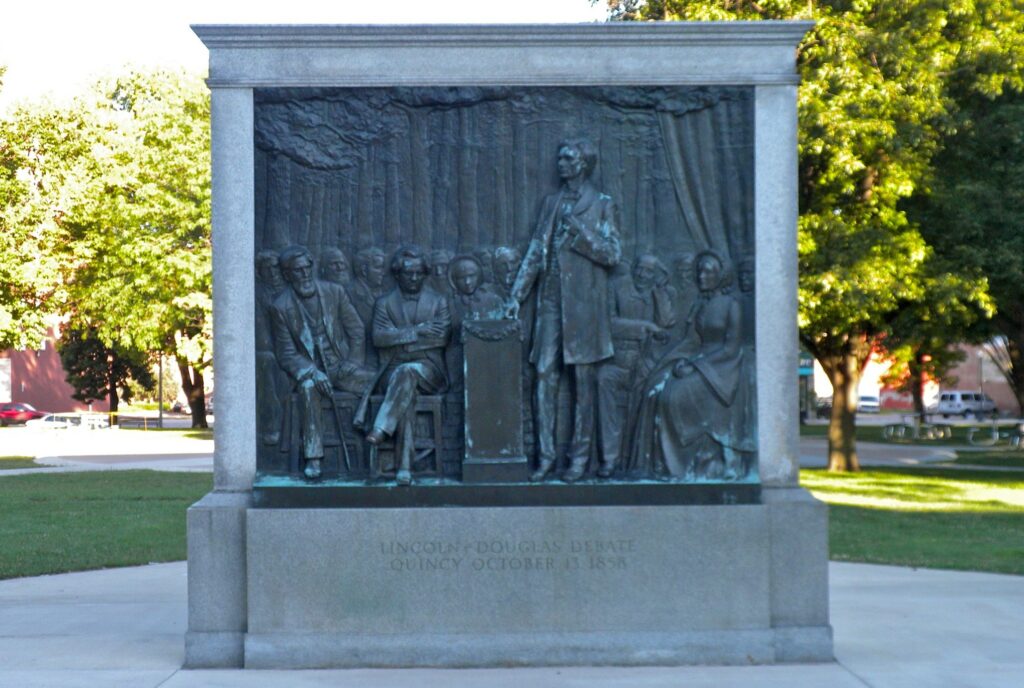
Other Notable Visits
ABRAHAM LINCOLN, later the 16th president of the United States, had relationships with a considerable number of Quincy men, but “The Lincoln Log,” the authoritative daily chronology of Lincoln’s activities, shows he was in Quincy on only two occasions. He took trains through the community at least four times, but his destinations were in Iowa, Kansas and Missouri.
Lincoln stayed in Quincy two nights in late 1854. He was in town to make the last in a series of speeches against the explosive Kansas-Nebraska Act, which two Quincyans sponsored that year — Stephen A. Douglas in the Senate and William Richardson in the House. At the request of lawyer Abraham Jonas of Quincy, Lincoln was here to boost the candidacy of Quincy friend and fellow lawyer Archibald Williams, who eventually lost to Richardson for the Fifth Congressional District seat.
Lincoln spoke that evening to a crowd packed onto the second floor of Kendall’s Hall at Sixth and Maine. Orrin Kendall’s confectionary business was on the first floor.
Lincoln’s better known visit was on Oct. 13, 1858, when he debated Douglas during their contest for Douglas’ U.S. Senate seat. Lincoln had arrived on the train from Macomb that morning. Approximately 12,000 people joined him in Washington Park that afternoon to hear him debate Douglas.
ULYSSES S. GRANT, later the 18th president of the United States, visited Quincy twice. He first came to Quincy when he was a colonel with the 21st Illinois Infantry on July 11, 1861 — a few months after the first shots were fired at Fort Sumter to begin the Civil War. Grant had received orders to proceed to Quincy to allay possible hostile action on the Illinois-Missouri border.
His second visit to Quincy was on Aug. 15, 1868, as a presidential candidate after receiving an invitation from Isaac Newton Morris, a lawyer, newspaper publisher and two-time Democratic Congressman who Grant called “a lifelong friend.” Morris had encouraged fellow Democrats to support Republican Grant in the upcoming election and invited the Civil War general to Quincy. Grant accepted but did not make his plan to visit Quincy known. Grant was surprised by the huge reception.
“What was my surprise to find what seems to be not only the whole city, but the whole county of Adams, turned out to welcome me to your midst,” he told the thousands who greeted him. Later that night, he wrote, “The enthusiasm of the people seemed to be very great, but I feel a little out of place putting myself in a position where I may be misunderstood.”
Months later, Grant defeated Horatio Seymour to win the 1868 presidential election.
WILLIAM HOWARD TAFT, later the 27th president of the United States, visited Quincy on Oct. 7, 1904. He had been the U.S. Secretary of War for about eight months when he spoke at Turner Hall. More than 1,000 people were turned away at the event. He was picked up by a welcome committee in Hannibal and driven to Quincy, where he had dinner at the Newcomb Hotel. He spoke for two hours on government expenditures and the Philippines.
The Quincy Daily Whig reported Taft said the following about the Democratic Party: “A brilliant senator, who has a host of Negro stories, told one of listening to a dialogue between two old darkies in a very heated controversy. Finally, he heard one of the old men break out against the other with the words, ‘Mistah Peterson, you argufy and you argufy, but you don’t locate!’ This exactly describes the method of the Democratic Party.”
FRANKLIN D. ROOSEVELT, later the 32nd president of the United States, visited Quincy on Oct. 11, 1920. He was the Democratic nominee for vice president, running the ticket with Gov. James M. Cox of Ohio. He first spoke in Hannibal, Mo., at 8:30 a.m., then took the train to Quincy, arriving at about 10:30 a.m. He was transported by car to Washington Park. After Roosevelt’s speech, his traveling party — which included his wife, Eleanor, ate lunch at the Kiwanis Club before going to Galesburg at about 12:30 p.m.
JOHN F. KENNEDY, later the 35th president of the United States, visited Quincy on Oct. 26, 1959, as part of a downstate tour. He was a 42-year-old senator from Massachusetts at the time, but three months later announced he would seek the Democratic nomination for president. Accompanied by his sister, Eunice Kennedy Shriver of Chicago, and a corps of magazine and newspaper correspondents, Kennedy arrived at Baldwin Field late Sunday night and stayed at the Hotel Lincoln-Douglas.
He held a brief news conference Monday morning, standing on a chair near a table where coffee and donuts were served. He shook hands with more than 300 people in 45 minutes in the hotel ballroom. Kennedy then addressed about 2,000 people at Quincy College.
LYNDON B. JOHNSON, later the 36th president of the United States, visited Quincy on Sept. 2, 1960. He was a senator from Texas at the time, as well as John F. Kennedy’s running mate in his bid for the presidency. Accompanied by his wife Lady Bird, Johnson’s plane landed at Baldwin Field in the afternoon. He was greeted by a crowd of about 300 people, then proceeded to Washington Park. He spoke for nearly 30 minutes to a crowd of about 2,000 people, telling the Republican Party needed “a good dose of mouthwash.”
RICHARD M. NIXON, later the 37th president of the United States, visited Quincy on Oct. 28, 1960. He was the vice president at the time during President Dwight D. Eisenhower’s second term. His plane landed at Baldwin Field. Nixon, accompanied by his wife Pat, made 10 campaign speeches that day, so he didn’t spend much time in Quincy. About 7,000 people showed up.
Miss Clipping Out Stories to Save for Later?
Click the Purchase Story button below to order a print of this story. We will print it for you on matte photo paper to keep forever.

